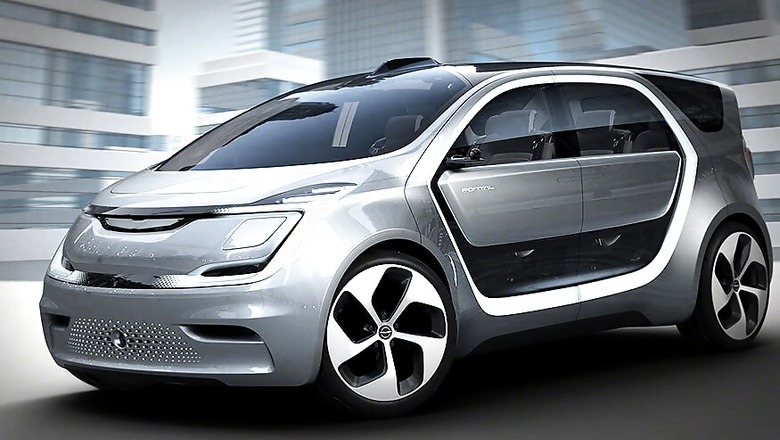
views
Set to make its real-world debut at CES on January 4, the FCA Portal is a conceptual minivan that can drive itself and that has been designed with transporting millennials in mind. It's only fitting that Chrysler, the company that essentially invented the US concept of the minivan, should use one as the basis for its autonomous car, especially as it's aimed at drivers who are currently being chauffeured to school or sports practice in something very similar.
This car, however, can chauffeur itself, but only in certain circumstances such as on the highway or in heavily congested queues. That's because it only uses current generation autonomous driving tech and means it's potentially one or two feasibility studies away from being a production reality. Likewise, it's got an electric powertrain that's good for a very realistic 250-mile range between charges.
Going with batteries means that there's no need to make room for an engine or gearbox and drive shafts, so although the Portal is actually slightly smaller than the latest Chrysler Pacifica Minivan, there's more interior space on offer.
The cabin (like everything else about the car), was, according to FCA, created by Millennials for Millennials, so there mobile device docking stations everywhere. Ten gadgets can be simultaneously connected and charged, which could cause confusion as the car's actual controls and interface look very much like tablets and portable screens, too.
Panasonic was heavily involved in the concept, providing everything from the aforementioned docking stations to facial recognition and voice commands so that every person stepping inside the car through its dual sliding doors gets a personalised experience. And as people's needs change with time, so will the Portal. Each of the six seats can move backwards and forwards to the vehicle's internal extremities and can fold completely flat like a day bed or living space.
The software powering the car's features – and enabling connections between other vehicles and infrastructure – also supports ride-hailing and ride sharing as standard and, as this is a car for digital natives, social media support and the ability to capture and share spontaneous multimedia mementoes on the move are also baked in.


















Comments
0 comment